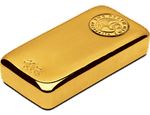A Guide to Testing Gold, Silver and Fakes
A Comparison of Common Test Methods to Detect Fake Gold and Silver Bullion and Bars

The most effective way to safeguard your capital from financial shocks is through holdings in physical gold and silver. Precious metal coins often have a significant price premium for numismatic value which may not be realized under future economic conditions. The best choice for maximum exposure to the value of precious metals is cast and extruded bullion and bars, which can be bought at very low premiums to spot gold and silver prices.
Unfortunately, there has been an alarming proliferation in the counterfeiting of precious metal bullion and bars, most notably in China. Online news reports of investors being duped and dealers uncovering fraudulent products are published daily. The principal objective for the counterfeiters is to produce a product with exactly the same appearance, proportions, density and concentrations of metals on the outer surfaces as genuine bullion. This is achieved by the inclusion of inserts or cores of low-cost base metals with the same density as the precious metals they attempt to fake. In gold bullion, fakes have gold replaced with tungsten. For silver, lead melted with tin is the substitute of choice, although a range of base metal alloys may be used.
There are a number of test methods to analyze gold and silver bullion which measure a range of chemical, physical and electromagnetic properties. This article discusses three commonly used testing methods and their ability to conclusively authenticate precious metal bullion and bars.
- Specific gravity test
- Testing by X-ray Flourescence (XRF)
- Ultrasonic testing
Specific Gravity Testing
Ever since the Greek mathematician, Archimedes, was tasked to develop a test to determine if King Heiro II of Syracuse had been given a crown made with fake gold some 2250 years ago, specific gravity testing has been used to verify gold and silver objects.
Testing for specific gravity is relatively easy and can be done with an accurate set of scales. Firstly, position the gold or silver bullion on the scales and record the weight (1). Place a container filled with distilled water on the scales. Then zero the scales. Using a rig with fishing line or a similar light weight material, suspend the gold or silver so that it is completely immersed in the water. Do not allow the bar or bullion, or anything used to suspend it, to touch the bottom or any other part of the container filled with water. Now record that weight (2). Divide weight (1) by weight (2). For pure gold the result (specific gravity) will be 19.32. For silver the result will be 10.49.
The use of base metal inserts and cores to match the densities of gold and silver make specific gravity testing unsuitable as a stand-alone conclusive solution for detecting fakes.
XRF Analysis
X-ray Fluorescence (XRF) is commonly used by bullion dealers and pawn shops to provide an assay (test of purity) of gold and silver objects. In the case of bullion and bars the surface is analyzed to give a percentage of all the metals present, which can then be compared with the known specifications for that particular bullion product. Quality XRF instruments are moderately expensive, and therefore purchase of test equipment by individual investors is difficult to justify. However, many bullion dealers offer quick and convenient XRF analysis in their stores. XRF scanning and assay with a reputable instrument will give extremely accurate results.
However, XRF results are limited to the outer surface of the object being tested. Typically the maximum depth of penetration into pure gold by XRF is just 0.01 mm or 10 microns. A counterfeiter only needs to ensure that bullion and bars with base metal cores have a sufficiently thick coating of real gold or silver at the same purity as the genuine bullion product.
Whilst specific gravity and XRF testing are used by investors to authenticate precious metals, both can provide false validation for counterfeit products, even when used in combination. The best solution to beat the counterfeiters is measuring the properties of ultrasound.
Ultrasonic Testing
Testing with ultrasound involves measuring the velocity of sound in gold or silver bullion against the distance the sound waves travel through the entire profile of the section being tested. Sound velocity is dependent on both the elasticity and density of the metal. For example, whilst gold and tungsten have very similar densities, they differ greatly in elasticity. Gold is very malleable and tungsten is very brittle. As such, despite the similar densities, the velocity of sound passing through pure gold is 3240 m/s, and for tungsten it is 5180 m/s. Detection by testing differences in sound velocity between precious metals, and the base metals used as cores in fakes, guarantees the identification of counterfeits.
Using an ultrasound test kit, the precious metals investor can easily calculate the distance that sound waves travel through gold bullion and silver bars. Simply by presetting the known sound velocity of the precious metal being tested, the instrument returns a distance which is then compared with the known thickness of the bullion or bar. True thickness is known by product specification, calipers or even a common ruler.
Furthermore, sound waves emitted from an ultrasound transducer will reflect at interfaces between different materials. For example, ultrasonic waves passing through gold that encounter tungsten will be reflected back to the transducer. This will give a meaningless result in the instrument that does not corroborate with the true thickness of the gold or silver bullion or bar being measured.
Whilst specific gravity and XRF testing can often identify amateurish fakes of gold bullion and silver bars, due to recent and advanced counterfeiting methods, these tests can give false positives. However, it is very difficult, if not impossible, to fake bullion and bars to give a false verification by ultrasound. Therefore all suspicious results recorded by ultrasonic testing warrant investigation for fraud by inserts, thick plating, or voids.